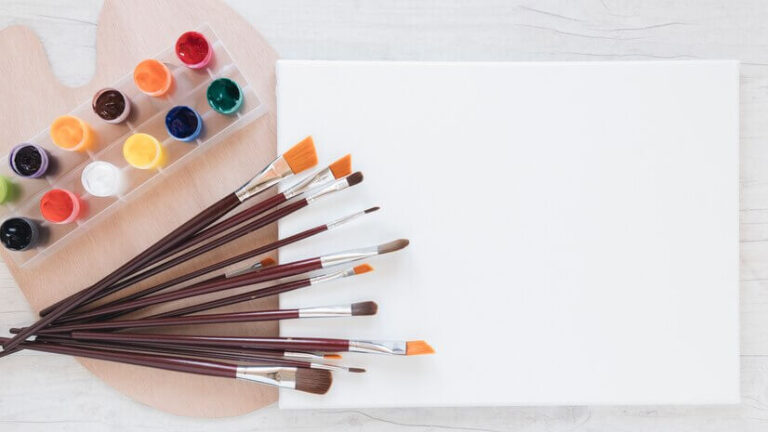Research Methodology in Fine Arts: Bridging Creativity and Inquiry
Research Methodology in Fine Arts Written By Artist Laiba Imran Fine Arts research is not just about appreciating art; “It’s a dynamic field that blends creativity and academic investigation to uncover new knowledge.” Whether you’re an artist, researcher, or art enthusiast, understanding the research methodologies in Fine Arts provides deeper insights into: Artistic techniques Cultural impact Theoretical frameworks In this guide, we’ll explore: How innovative research approaches in Fine Arts help bridge the gap between: Artistic expression Systematic inquiry Offering a transformative view of the arts. Main Features of Fine Arts Research Fine Arts research is unique because it combines both: Practical perspectives Theoretical perspectives Making the artistic process itself a form of research. Here are some key aspects: Practice-based Research In Fine Arts, practice-based research involves creating artwork as; “The primary method of inquiry.” The process of creating and the artwork; Produced generate new knowledge and insights, Emphasizing the relationship between the artist and their medium. Theoretical Research This form of research focuses on how artistic techniques inform broader theoretical understanding. Scholars explore how visual art can shape concepts such as identity, politics, or culture. Critical Analysis Critical analysis in Fine Arts research examines specific art movements, theories, or individual works. This helps form a well-rounded critique and deepens understanding of historical and contemporary art trends. Collaborative Approach Fine Arts research often draws from multiple disciplines, such as: History Psychology Anthropology Technology By collaborating across these fields; “Researchers can develop a more comprehensive understanding of art and its societal impact.” Research Methods in Fine Arts In Fine Arts, researchers use a variety of methodologies depending on the nature of their inquiry. The main methods include: Qualitative Research Qualitative methods help explore the personal journey of artists, such as: Anthropology Case studies Narrative research This type of research often involves: In-depth interviews Participant observation A personal reflection on artistic processes Quantitative Research While less common in Fine-Arts; Quantitative methods like surveys and audience analysis can help: Estimate trends, and preferences. Responses to specific artworks or movements. Fields such as psychology and sociology may employ these techniques to study the influence of art on emotions or behavior. Artistic Research Artistic research is a unique approach where the creation of art itself becomes both the: Process of the research. Outcomes of the research. This method focuses on innovation and the artist’s creative process; “Often resulting in exhibitions or creative works as the research output.” Processes in Fine Arts Research Identifying a Research Problem The first step is defining a research question. For instance, how do digital tools affect traditional painting techniques? Literature Review Researchers must review existing literature, journals, and exhibitions to build a foundation for their research. This helps contextualize their work within the broader academic and artistic discourse. Setting Research Aims and Questions Aims define the scope of the research. For example, an aim might be to investigate the impact of graphic media on traditional art forms. Specific questions like “How do viewers react to digital versus traditional art?” can guide the research direction. Choosing a Methodology The researcher must decide whether their approach will be practical (creating art) or theoretical (studying existing art). Each methodology influences the outcome of the research. Data Collection in Fine Arts Data in Fine Art research can include sketchbooks, interviews with artists or viewers, and visual documentation of the creative process. Experimentation is also a key component, where the artwork evolves as part of the inquiry. Analysis in Fine Arts Once data is collected, researchers analyze patterns, themes, and artistic elements. This stage often involves reflecting on the artwork produced and understanding its relationship to the research question. Presentation The final stage in Fine Arts research is presenting findings. This can take the form of a written thesis, academic article, or exhibition showcasing the artwork created during the research. Materials and Techniques Used in Fine Arts Research Sketchbooks and Activity Logs These tools document the artist’s ideas, influences, and artistic development. They provide a visual record of the creative process. Imagery-Based Analysis Studying the composition, style, and technique of visual works. Helps deepen theoretical and practical understanding of Fine-Arts. Digital Tools in Fine Arts For fine-arts research, the software is now integral like as: Adobe Photoshop Illustrator Procreate These tools allow artists to experiment with digital mediums, “Blending traditional and modern techniques.” Interviews Gaining perspectives from artists, curators, and audiences provides qualitative data that enriches the research. Their insights help bridge the gap between artistic intent and audience reception. Examples of Fine Arts Research Topics The role of cultural identity in contemporary art. The impact of digital media on traditional painting techniques. Investigating the influence of historical art movements on modern sculpture. Ethical Considerations in Fine Arts Research Ethics play a crucial role in Fine Arts research. Researchers must avoid plagiarism by giving credit to original artists and properly citing sources. Moreover, it’s essential to ensure that the research is original and respects the cultural and intellectual property of others. Conclusion: Fine Arts Research Fine-Arts research methodologies offer a unique intersection of: Creativity Academic inquiry Providing fresh insights into both the: Artistic process Theoretical understanding Whether you are an artist, scholar, or art lover, “Practicing these research methods can deepen your appreciation for art in all its forms.” Explore further, Experiment with different approaches, Contribute to the ever-evolving landscape of Fine Arts. Interested in exploring more about Fine-Arts research? Start your journey today by experimenting with these methodologies and uncovering the depths of artistic knowledge. Share your thoughts and experiences with us in below comment box. Unlocking the Secrets of Art Analysis: Techniques for Deep Interpretation
